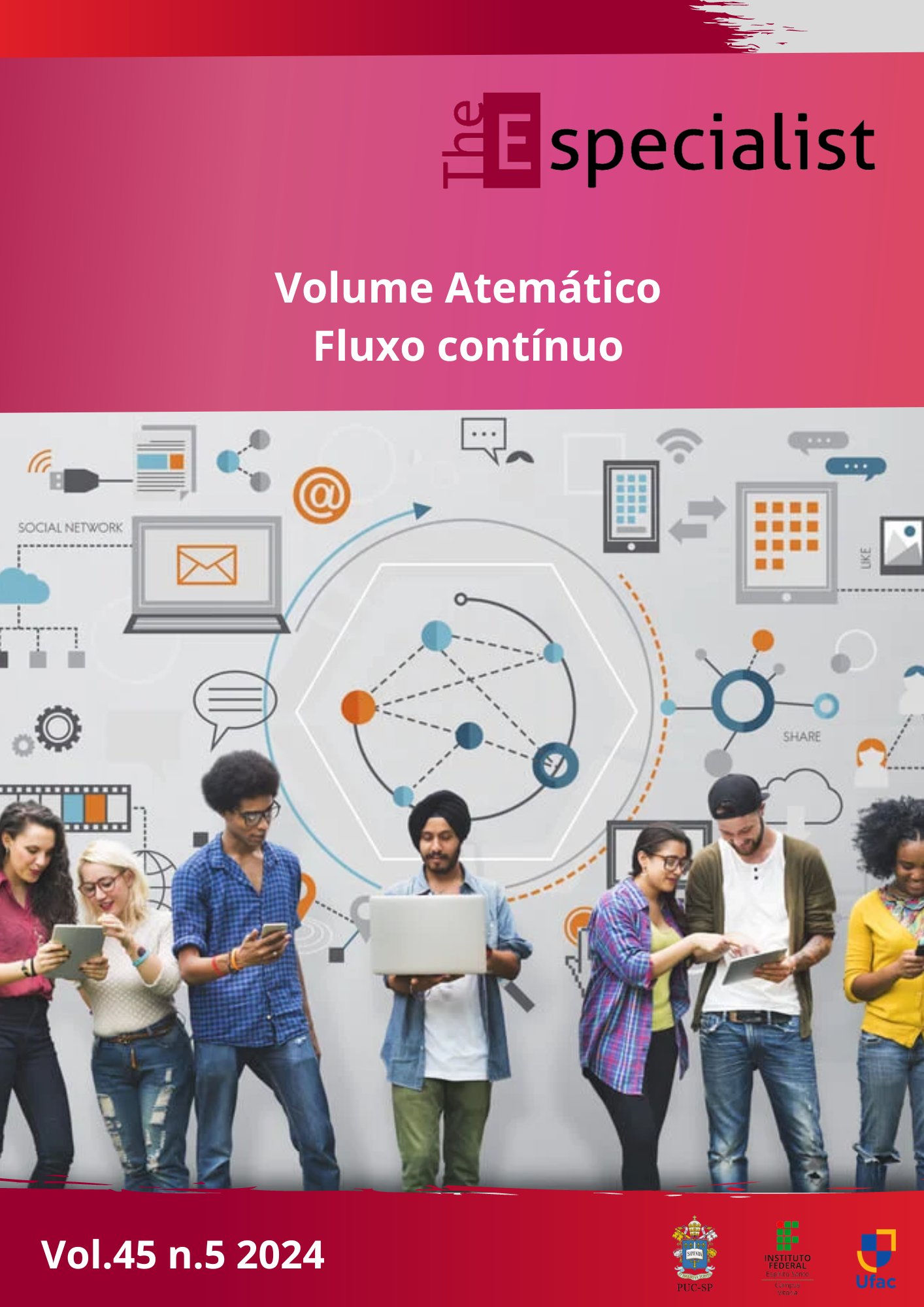UNE APPROCHE DE LA GRAMMAIRE DES CONSTRUCTIONS POUR L'UTILISATION NOVATRICE DE [UNLESS X]
DOI :
https://doi.org/10.23925/2318-7115.2024v45i5e65052Mots-clés :
Unless, Construction Grammar, Corpus Linguistics, InternetRésumé
This study analyzes the construction [unless X] as based on the Construction Grammar framework (cf. Fillmore et al., 1988; Goldberg, 1995, 2006; Bybee, 2010), in association with the Corpus Linguistics (McEnery; Hardie, 2013; Sinclair, 2005) methodology. The construction [unless X] characterizes as an innovative use of the word “unless”, in which the conjunction isn’t followed by a subordinate clause, as it can be seen in “don’t add Coca Cola unless diet” or “he was so calm unless tried” or “I can never tell the season unless winter”. Motivated by the findings of Mendes Junior and Mattos (2021), who reported high rates of productivity in the construction [because X] (e.g. “I’m excited for my holidays because tired”), we propose a model that accounts for the new constructional properties of “unless”. Data were collected through the iWeb Corpus (Davies, 2018), which contains 14 billion words extracted from about 22 million web pages. Preliminary analysis shows that the construction [unless X] heavily favors verbs in the past participle, adjectives, adverbs and nouns in the [X] slot. Moreover, the [X] slot cannot be filled by interjections, pronouns, conjunctions and prepositions, as opposed to [because X]. Following Fillmore et al. (1988), [unless X] can be understood as codable, formal, extra-grammatical construction. We suggest that [unless X] often behaves similarly to the traditional use of ‘unless’, though it tends to favor reduced clauses and is mainly used in more informal contexts.
Références
BOHMANN, Axel. Language change because Twitter? Factors motivating innovative uses of because across the English-speaking Twittersphere. English in computer-mediated communication: Variation, representation, and change, v. 93, p. 149-178, 2016.
BYBEE, Joan. Language, usage and cognition. Cambridge University Press, 2010.
DAVIES, Mark. iWeb Corpus. 2018. Disponível em: . Acesso em 10 de agosto de 2023.
ETYMOLINE. Online Etymological Dictionary. 2023. Disponível em: . Acesso em 10 de agosto de 2023.
FILLMORE, Charles J.; KAY, Paul; O'CONNOR, Mary Catherine. Regularity and Idiomaticity in Grammatical Constructions: The Case of Let Alone. Language, v. 64, n. 3, p. 501-538, 1988.
GOLDBERG, Adele E. Pragmatics and argument structure. The handbook of pragmatics, p. 427-441, 2006.
GOLDBERG, Adele E. Constructions: A construction grammar approach to argument structure. University of Chicago Press, 1995.
HOFFMANN, Thomas; TROUSDALE, Graeme. The Oxford handbook of construction grammar. Oxford University Press, 2013.
KANETANI, M. A Note on the Because X Construction: With Special Reference to the X-Element. Studies in language and literature, n. 70, p. 67-79, 2016.
MCCULLOCH, Gretchen. Because internet: Understanding how language is changing. Random House, 2019.MCENERY, Tony; HARDIE, Andrew. The history of corpus linguistics. The Oxford handbook of the history of linguistics, p. 727-745, 2013.
MEMEBASE. Internet Trends. Disponível em: <https://memebase.cheezburger.com>. Acesso em 31 de dezembro de 2023.
MENDES JUNIOR, Wellington Araujo; MATTOS, Elisa. Because X sob a perspectiva da Gramática de Construções. Domínios de Lingu@ gem, p. 1-42, 2021.
SCHNOEBELEN, Tyler. Innovating because innovation. Corpus linguistics: Tips, tricks, and other resources for people interested in language, 2014.
SINCLAIR, John. Corpus and text-basic principles. Developing linguistic corpora: A guide to good practice, v. 92, p. 1-16, 2005.
TRASK, Robert Lawrence. A dictionary of grammatical terms in linguistics. Routledge, 2013.
WALLA, Stephanie. Because, x: A new construction of because in popular culture. Eastern Michigan University, 2016.
Téléchargements
Publiée
Comment citer
Numéro
Rubrique
Licence
© The ESPecialist 2024

Ce travail est disponible sous la licence Creative Commons Attribution 4.0 International .
The authors grant the journal all copyrights relating to the published works. The concepts issued in signed articles are the absolute and exclusive responsibility of their authors.


 Esta obra está licenciada com uma Licença
Esta obra está licenciada com uma Licença 